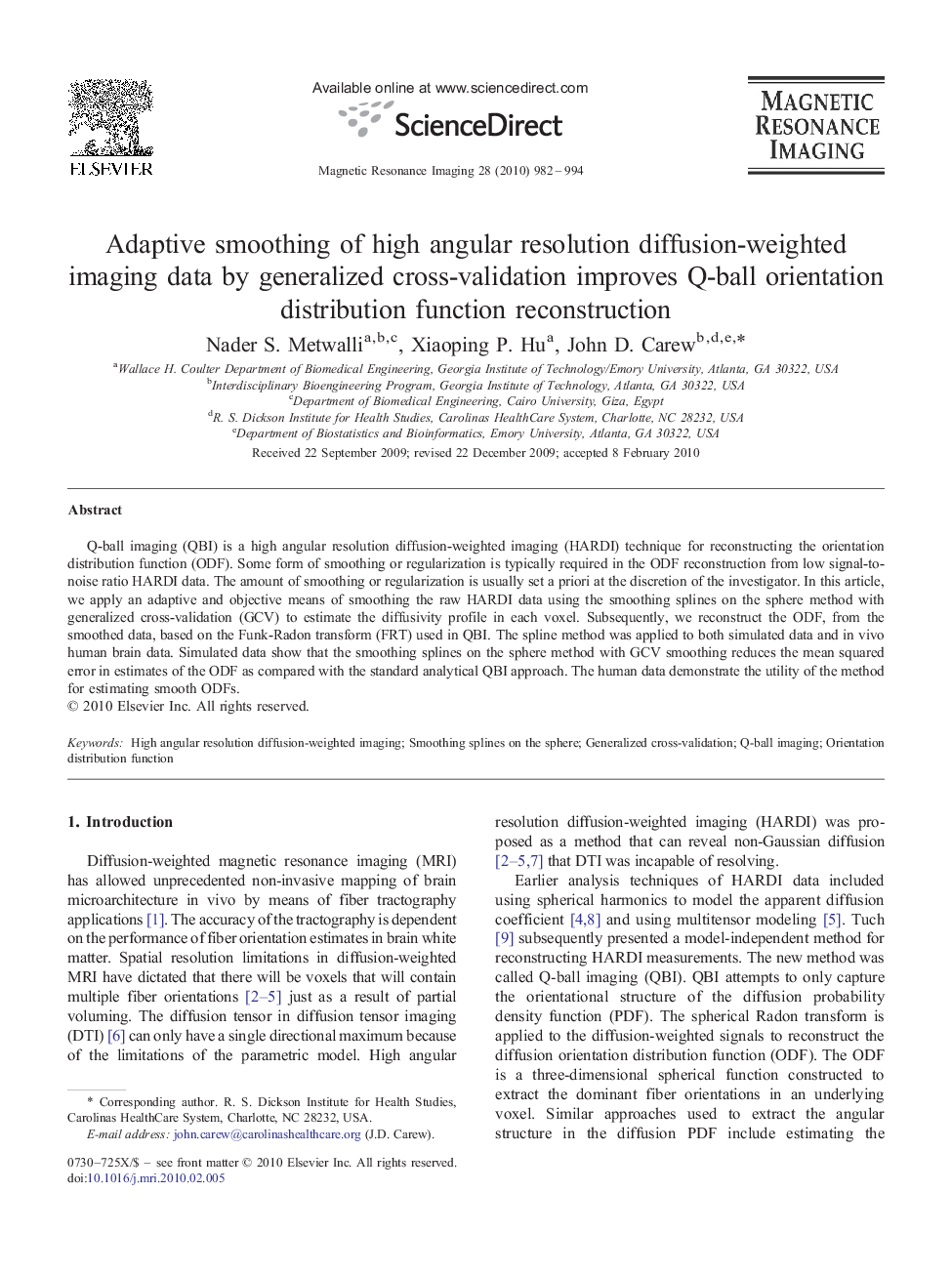| Article ID | Journal | Published Year | Pages | File Type |
|---|---|---|---|---|
| 1807625 | Magnetic Resonance Imaging | 2010 | 13 Pages |
Q-ball imaging (QBI) is a high angular resolution diffusion-weighted imaging (HARDI) technique for reconstructing the orientation distribution function (ODF). Some form of smoothing or regularization is typically required in the ODF reconstruction from low signal-to-noise ratio HARDI data. The amount of smoothing or regularization is usually set a priori at the discretion of the investigator. In this article, we apply an adaptive and objective means of smoothing the raw HARDI data using the smoothing splines on the sphere method with generalized cross-validation (GCV) to estimate the diffusivity profile in each voxel. Subsequently, we reconstruct the ODF, from the smoothed data, based on the Funk-Radon transform (FRT) used in QBI. The spline method was applied to both simulated data and in vivo human brain data. Simulated data show that the smoothing splines on the sphere method with GCV smoothing reduces the mean squared error in estimates of the ODF as compared with the standard analytical QBI approach. The human data demonstrate the utility of the method for estimating smooth ODFs.
